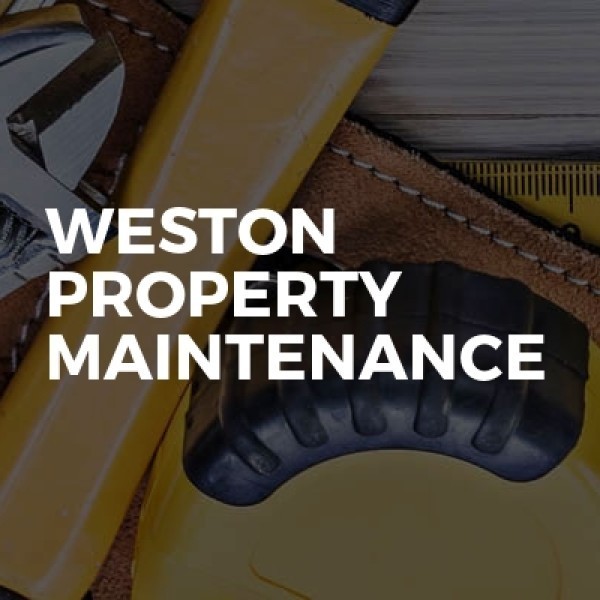Property Refurbishment in Ryde
Filter your search
Post your job FREE and let trades come to you
Save time by filling out our simple job post form today and your job will be sent to trades in your area so you can sit back, relax and wait for available trades to contact you.
Post your job FREETransform Your Space with Modernized:
Your Premier Renovation Partner
Since its inception in 2015, Modernized has been... read more »
Search Property Refurbishment in places nearby
Understanding Property Refurbishment in Isle of Wight
Property refurbishment in Isle of Wight is a fascinating journey that combines the charm of the island with the potential for modern upgrades. Whether you're a homeowner looking to enhance your living space or an investor aiming to increase property value, refurbishment offers a plethora of opportunities. This article delves into the various aspects of property refurbishment, providing insights and guidance for those interested in transforming their spaces on this picturesque island.
The Appeal of Isle of Wight for Property Refurbishment
The Isle of Wight, with its stunning landscapes and rich history, presents a unique backdrop for property refurbishment. The island's appeal lies in its blend of natural beauty and cultural heritage, making it an attractive location for both residents and visitors. Refurbishing a property here not only enhances its aesthetic and functional value but also contributes to preserving the island's charm.
Historical Significance and Architectural Styles
The Isle of Wight boasts a diverse range of architectural styles, from Victorian and Edwardian to contemporary designs. Many properties on the island are steeped in history, offering a unique opportunity to blend traditional elements with modern conveniences. Understanding the architectural significance of your property can guide your refurbishment decisions, ensuring that any upgrades respect the original character while enhancing functionality.
Natural Beauty and Environmental Considerations
Refurbishing a property on the Isle of Wight also involves considering the island's natural environment. With its stunning coastlines and lush countryside, the island offers a serene setting that can be complemented by thoughtful design choices. Incorporating eco-friendly materials and sustainable practices not only benefits the environment but also adds value to your property by appealing to environmentally conscious buyers.
Planning Your Property Refurbishment
Embarking on a property refurbishment project requires careful planning and consideration. From setting a budget to selecting the right contractors, each step is crucial to the success of your project. Here, we explore the key elements to consider when planning your refurbishment on the Isle of Wight.
Setting a Realistic Budget
One of the first steps in planning a refurbishment is establishing a realistic budget. Consider the scope of the project, the materials needed, and any unforeseen expenses that may arise. It's essential to allocate funds for each aspect of the refurbishment, from structural changes to interior design, to ensure that you stay within your financial limits.
Choosing the Right Contractors
Selecting experienced and reputable contractors is vital to the success of your refurbishment project. Look for professionals who have a proven track record on the Isle of Wight and are familiar with local regulations and building codes. Personal recommendations and online reviews can be valuable resources in finding the right team for your project.
Understanding Local Regulations and Permits
Before commencing any refurbishment work, it's important to understand the local regulations and obtain the necessary permits. The Isle of Wight Council provides guidance on planning permissions and building regulations, ensuring that your project complies with all legal requirements. Failing to secure the appropriate permits can result in delays and additional costs, so it's crucial to address this aspect early in the planning process.
Designing Your Refurbished Space
The design phase of your refurbishment project is where creativity meets practicality. Whether you're updating a single room or transforming an entire property, thoughtful design choices can enhance both the aesthetic and functional aspects of your space.
Incorporating Modern Design Trends
Modern design trends offer a wealth of inspiration for your refurbishment project. From open-plan living spaces to minimalist aesthetics, contemporary design elements can breathe new life into your property. Consider incorporating features such as energy-efficient lighting, smart home technology, and sustainable materials to create a modern and eco-friendly living environment.
Preserving Traditional Features
While modern design trends are appealing, preserving traditional features can add character and charm to your property. Original fireplaces, wooden beams, and period details can be restored and integrated into your design, creating a harmonious blend of old and new. This approach not only respects the history of your property but also enhances its unique appeal.
Maximising Space and Functionality
Effective space planning is essential in any refurbishment project. Consider how each room will be used and design your layout to maximise functionality. Clever storage solutions, multi-purpose furniture, and open-plan designs can help you make the most of your available space, creating a comfortable and efficient living environment.
Executing the Refurbishment Project
Once the planning and design phases are complete, it's time to bring your refurbishment project to life. This stage involves coordinating various trades, managing timelines, and ensuring that the work is completed to a high standard.
Coordinating Trades and Services
Successful execution of a refurbishment project requires effective coordination of various trades and services. From electricians and plumbers to carpenters and decorators, each professional plays a crucial role in bringing your vision to life. Clear communication and scheduling are key to ensuring that the project runs smoothly and stays on track.
Managing Timelines and Expectations
Setting realistic timelines and managing expectations are essential components of a successful refurbishment project. Delays can occur due to unforeseen circumstances, so it's important to build flexibility into your schedule. Regular updates and open communication with your contractors can help you stay informed and address any issues promptly.
Ensuring Quality and Compliance
Quality and compliance are paramount in any refurbishment project. Regular inspections and quality checks can help ensure that the work meets your standards and complies with local regulations. Addressing any issues promptly can prevent costly repairs and ensure that your property is safe and functional.
Enhancing Property Value Through Refurbishment
One of the primary goals of property refurbishment is to enhance the value of your property. Whether you're planning to sell or simply want to increase your investment's worth, strategic upgrades can significantly boost your property's market value.
Identifying High-Impact Upgrades
Not all upgrades are created equal when it comes to enhancing property value. Focus on high-impact improvements such as kitchen and bathroom renovations, energy-efficient upgrades, and curb appeal enhancements. These areas tend to offer the greatest return on investment and can make your property more attractive to potential buyers.
Understanding Market Trends
Staying informed about current market trends can help you make strategic refurbishment decisions. Understanding what buyers are looking for in the Isle of Wight property market can guide your choices and ensure that your upgrades align with demand. This knowledge can also help you set a competitive asking price if you decide to sell.
Leveraging Professional Valuations
Professional valuations can provide valuable insights into the potential value of your refurbished property. Engaging a qualified valuer can help you understand the impact of your upgrades and set realistic expectations for your property's market value. This information can also be useful when negotiating with potential buyers or securing financing for future projects.
Frequently Asked Questions
What is the average cost of property refurbishment in Isle of Wight?
The cost of property refurbishment in Isle of Wight can vary widely depending on the scope of the project, the materials used, and the contractors hired. On average, homeowners can expect to spend between £20,000 and £50,000 for a comprehensive refurbishment, though costs can be higher for larger or more complex projects.
Do I need planning permission for property refurbishment in Isle of Wight?
Planning permission may be required for certain types of refurbishment work, particularly if it involves structural changes or alterations to the exterior of the property. It's important to consult with the Isle of Wight Council to determine whether your project requires planning permission and to obtain any necessary permits before commencing work.
How long does a typical property refurbishment take?
The duration of a property refurbishment project can vary depending on the size and complexity of the work involved. On average, a full refurbishment can take anywhere from three to six months to complete. It's important to set realistic timelines and allow for potential delays when planning your project.
Can I live in my property during refurbishment?
Whether you can live in your property during refurbishment depends on the extent of the work being carried out. For minor renovations, it may be possible to remain in the property, though it can be disruptive. For more extensive projects, it may be advisable to find temporary accommodation to ensure your comfort and safety.
What are the benefits of eco-friendly refurbishment?
Eco-friendly refurbishment offers numerous benefits, including reduced energy costs, improved indoor air quality, and a smaller environmental footprint. Sustainable upgrades can also enhance the value of your property by appealing to environmentally conscious buyers and aligning with modern design trends.
How can I ensure quality workmanship in my refurbishment project?
Ensuring quality workmanship involves selecting reputable contractors, setting clear expectations, and conducting regular inspections throughout the project. Open communication and attention to detail can help you achieve a high standard of work and ensure that your refurbishment meets your expectations.
Property refurbishment in Isle of Wight is an exciting opportunity to enhance your living space and increase your property's value. By understanding the unique characteristics of the island, planning carefully, and executing your project with precision, you can transform your property into a beautiful and functional space that reflects your personal style and meets your needs.





















